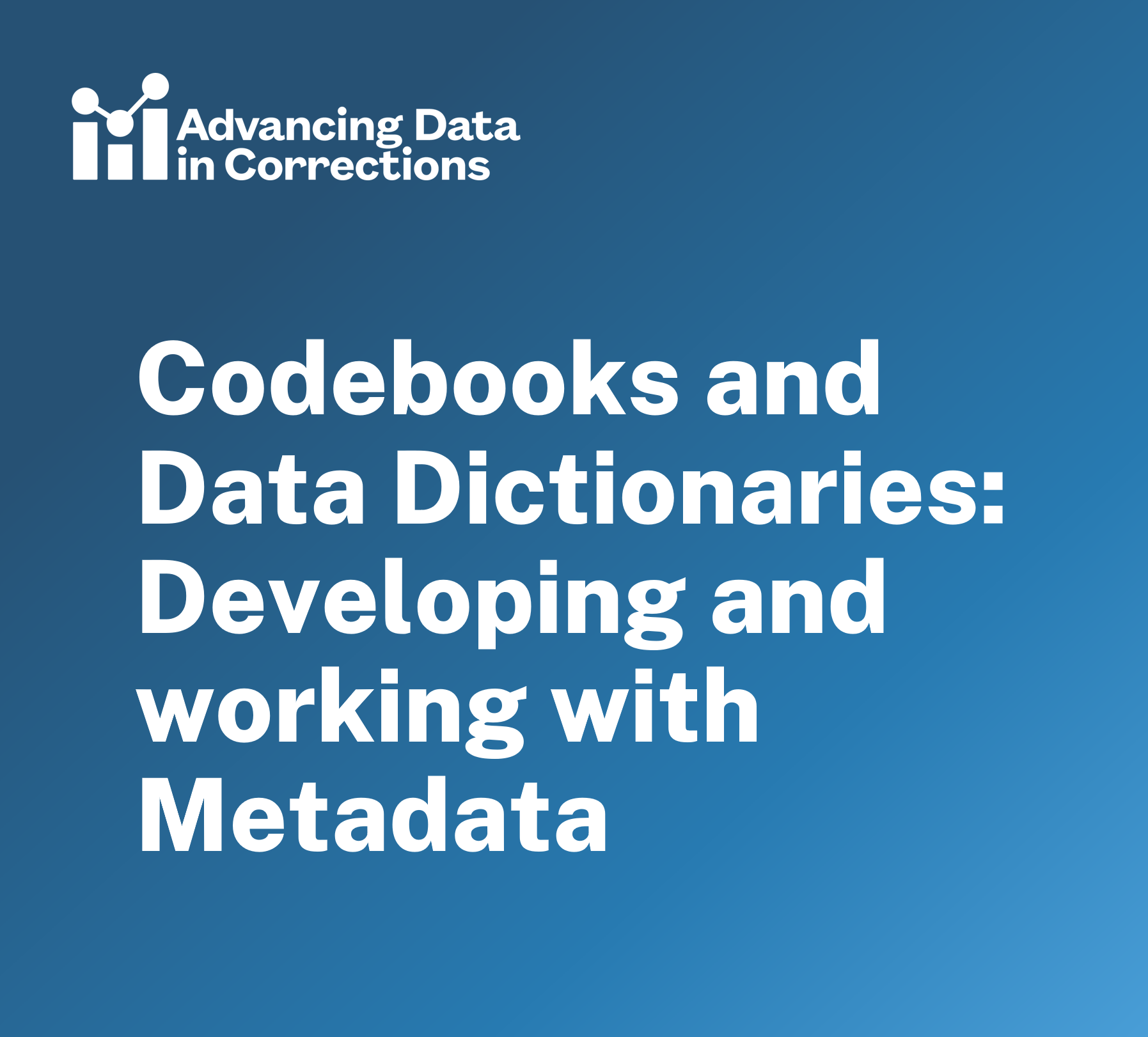Description
By sharing data across systems, your agency can learn more about the population it serves, improve operations and outcomes, evaluate programs or policy changes, and help other agencies do the same. Opportunities for cross-systems data sharing will require corrections analysts to be familiar with the data owned by their agency as well as the agency’s standards for data safety and security.
As an analyst, you may not have control over which data your agency collects or shares with other agencies and will likely not have the ability to independently enter into cross-systems data sharing agreements. But you may be asked to review data use agreements, prepare files to share with other agencies, share data, and conduct analysis. This course is designed to equip you with knowledge about what makes safe and effective cross-systems data sharing possible and the information you need to make informed decisions about managing and using the data shared between systems.
This course will explain the items to consider when your agency receives or makes a request for cross-systems data sharing, such as defining why (and which) data should be shared and understanding your agency’s data sharing capabilities. It will also highlight data safety and security, data use agreements, and relevant legal considerations that corrections analysts should be familiar with when sharing or receiving data. Finally, the course will provide tips on how agencies can analyze and report on cross-systems data with fidelity.
Intended Audience
This course is designed for corrections analysts of all levels, from those who may be conducting data analysis to share with other agencies to decision-makers who approve or deny requests for data sharing. This is intended to be an introduction to the foundational elements of cross-systems data sharing; thus, it does not require previous knowledge about data sharing.
Learning Objectives
After completing this course, learners will better understand three aspects of cross-systems dating sharing, reporting, and standards.
Conceptualization and Planning
These lessons examine the “whys” of cross-systems data sharing. They provide background and encourage corrections analysts to identify how they can facilitate data sharing. These lessons also explore the ethical considerations related to cross-systems data sharing. Understanding why an agency may want to share/receive data can help departments of corrections (DOCs) and corrections analysts effectively respond to and make requests. Understanding what data will be shared can ensure that personally identifiable information is disseminated appropriately and safely.
- Lesson 1: Introduction to Cross-Systems Data Sharing
- Lesson 2: The Ethics of Cross-Systems Data Sharing
Data Safety and Security
These lessons include an examination of relevant federal legislation and other legal considerations. They also cover how data is stored and transferred and how a DOC might execute a data use agreement (DUA) or memorandum of understanding (MOU) to share data. Monitoring data safety and security is key to ensuring that cross-systems data collaborations do not expose or compromise sensitive data.
- Lesson 3: Legal Considerations for Cross-Systems Data Sharing
- Lesson 4: Data Safety and Security
- Lesson 5: Data Use Agreements and Memorandums of Understanding
Analyzing and Reporting
These lessons encourage corrections analysts to consider what background information (e.g., codebooks, interviews with staff) is important when analyzing cross-systems data as well as how and when to verify the accuracy of results generated by cross-systems data sharing. Accurately analyzing and reporting data from cross-systems data sharing is important for building trust between data sharing partners and expanding opportunities for collaboration.
- Lesson 6: Analyzing and Reporting Cross-Systems Data
Learning Objectives
After completing this course, learners should be able to do the following:
- Recognize federal legislation related to data sharing and examine differences in regulations, including how standards and practices may vary across agencies.
- Accurately use key data safety and security terms and identify best practices in data sharing.
- Understand the key aspects of a data use agreement.
- Consider relevant factors (such as unit of analysis, relevant data) for analyzing cross-systems data.
- Explore real-life examples of cross-systems data sharing for inspiration.
Structure
This course is organized into six lessons that are meant to be completed in sequential order. Each lesson includes an explanation of the topic, relevant examples, and best practices. Where relevant, there will also be an exercise associated with the lesson to reinforce concepts covered in the video and written text. This exercise will include a real-world example that applies the lesson concepts to further your understanding of cross-systems data sharing. Additionally, each lesson will include a learning check to ensure you understand key concepts.
| Lesson |
Learning Objectives |
| 1: Introduction to Cross-Systems Data Sharing |
- Gain an understanding of why cross-systems data sharing is important to the field.
- Learn more about the agencies with whom corrections agencies sometimes share data and what data they share.
- Understand the role of corrections analysts in cross-systems data sharing.
|
| 2: The Ethics of Cross-Systems Data Sharing |
- Examine the ethical considerations associated with sharing data related to vulnerable populations outside of your agency.
- Become familiar with key terms related to personally identifiable information and corrections data.
- Identify how your agency can ensure other users know the features and limitations of your agency’s data and provide documentation to ensure it’s not misrepresented.
|
| 3: Legal Considerations for Cross-Systems Data Sharing |
- Gain an understanding of federal legislation related to data sharing (e.g., FERPA, HIPAA, 42CFR).
- Explore differences in state regulations, standards, and practices regarding data sharing.
|
| 4: Data Safety and Security |
- Become familiar with key terms related to data safety, security, and sharing.
- Identify best practices in data safety and security.
- Identify best practices in transferring data between agencies.
|
| 5: Data Use Agreements and Memorandums of Understanding |
- Understand the key components of data use agreements (DUAs) or memorandums of understanding (MOUs).
- Learn to identify best practices and red flags in DUAs.
- Explore the administrative paths for executing a DUA or MOU in the DOC.
|
| 6: Analyzing and Reporting Cross-Systems Data
|
- Understand barriers to sharing data across systems.
- Learn more about relevant factors (unit of analysis, relevant data) and best practices (such as documentation) for analyzing cross-systems data.
- Explore real-life examples of cross-systems data sharing for inspiration.
|
Resources
Estimated Time to Complete
3 hours




